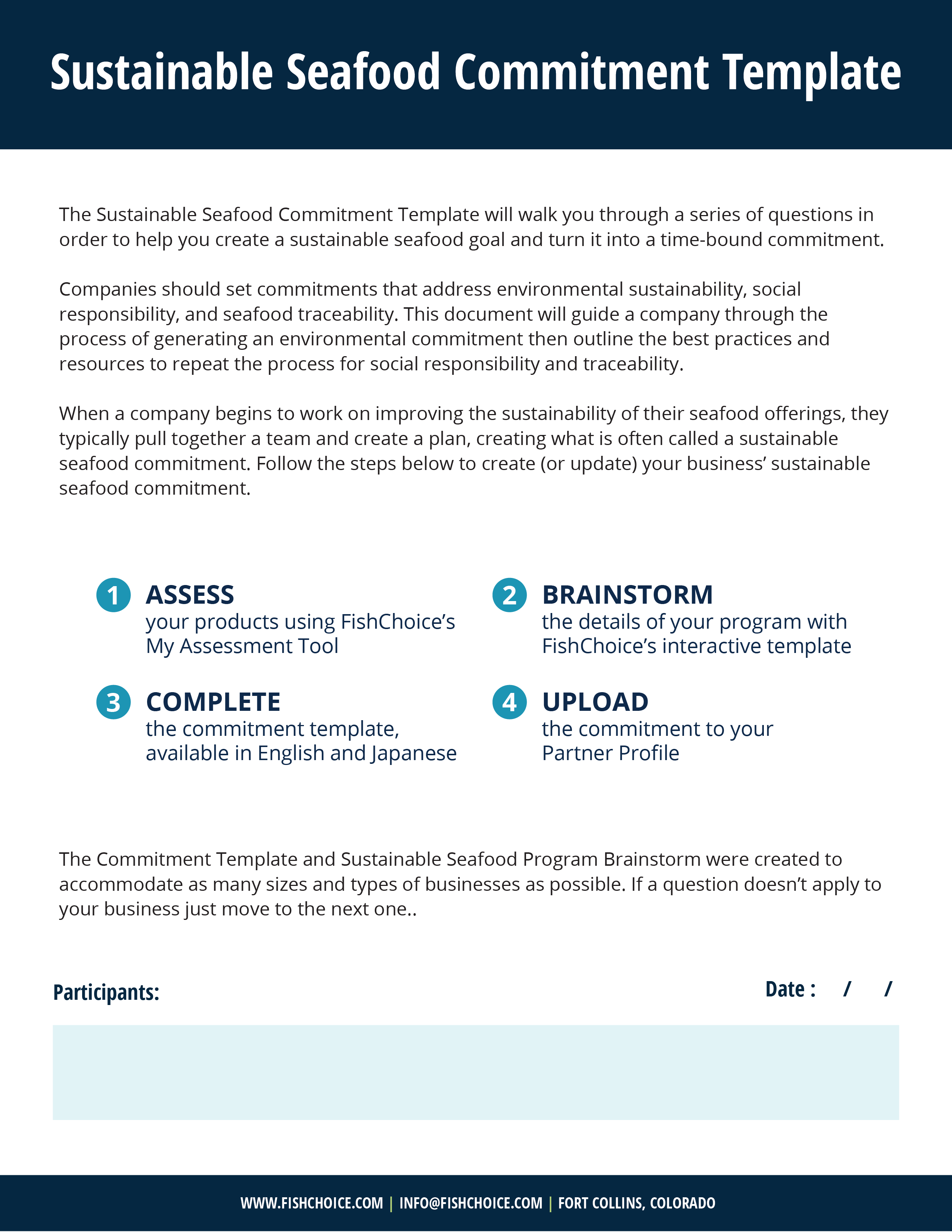A comprehensive commitment includes supporting elements such as plans for communication and advocacy. Consider the following questions in relation to your seafood commitment and sustainability program.
How, when, and where will you report on progress against your seafood commitment(s)?
This can be as simple as publishing an update on your website, posting it to your FishChoice Partner Profile or as in-depth as a section in a company’s annual report. View all of our Partner Commitments here.
|
Best practice is to report publicly on progress within one year, with metrics on the proportion of seafood that meets the commitment, and demonstrates increased progress over the previous report.
|
How will you share information with customers about your sustainable seafood commitment or sustainable seafood issues?
This may include messaging in-store, on packaging, on a website or FishChoice Partner Profile, via social media, or other avenues.
|
Best practice is to share information with customers about your sustainable seafood commitment and other sustainable seafood issues.
|
Will you make your seafood sources public?
Companies can publish a list of their seafood sources to their FishChoice Partner Profile where they can also upload and/or link to their commitment.
|
Best practice is to make seafood sources public (species, gear/production type, harvest/production area, and certification/FIP status).
|
How will you support fishery and aquaculture improvement projects? (if included in your commitment)
Learn more about getting involved in fishery improvement projects and aquaculture improvement projects. Support can include funding and participating in improvement projects along with encouraging supplier participation and public reporting by the project.
|
Best practice is to fund and participate in workplan activities of FIPs/AIPs, request your suppliers to participate in the project, and encourage FIPs to participate in reporting on www.FisheryProgress.org.
|
How will you engage in advocacy issues relating to your goals?
Advocating can take many forms such as submitting a public comment on a proposed rule, providing feedback to government officials, and voicing public support for reform. Companies can advocate on their own and share their efforts as Hy-Vee has done on its website. Companies can also advocate along with others in trade associations or coalitions.
|
Best practice is to advocate for improvements in environmental sustainability, social responsibility and traceability at the state, national and international levels.
|
|
Best practice is also to encourage a slow or stalled improvement project to make progress or a rated or certified fishery or aquaculture unit to improve.
|

